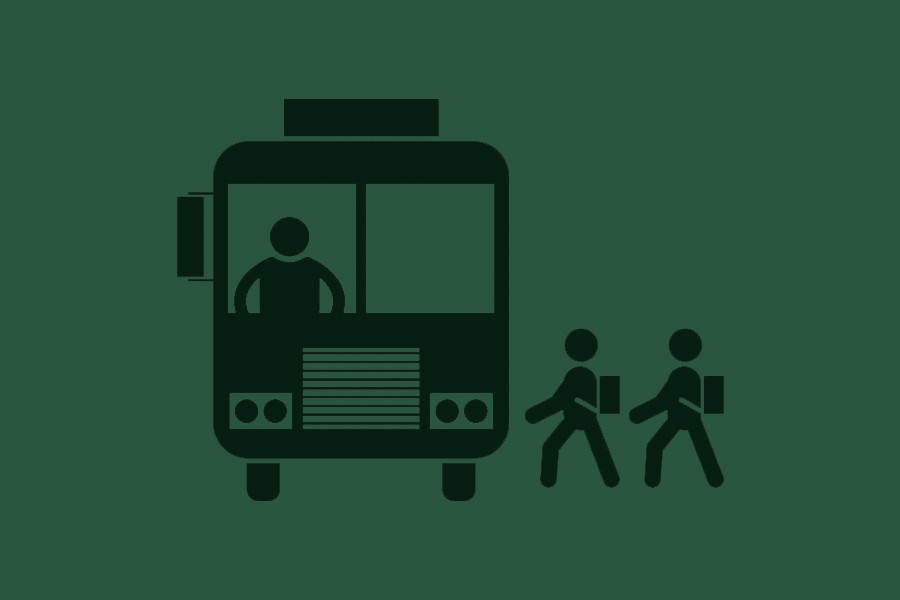Most of the public buses in Dhaka as well as across the country are not access-friendly for the passengers. Women and children as well as the elderly and the physically challenged people find it an uphill task getting into these buses.
High-floor buses have long been dominating the roads of the country - both in the long and short routes. Besides these buses, there are minibuses which mainly ply on the short routes. Compared to high-floor buses, minibuses have lower floors but have steps at the entrance. This makes both embarkment and disembarkment of passengers difficult.
On the longer routes like inter-district ones, buses with high-floors may be acceptable, but these are not at all suitable for intra-city or town service. Intra-city buses carry regular commuters who travel to and from their workplaces and educational institutions. Other people also take their travel in these buses on various purposes. There are frequent stoppages for the passengers to get in and get down.
There are few bus bays in Dhaka city. In a few stoppages, footpaths are used as bus bay or bus turnout. Without a designated bus bay, it is very difficult to get into the high-floor buses or minibuses.
However, what should be done immediately is to introduce low-floor regular buses replacing the existing rickety buses and minibuses on the city roads. There is already a move to introduce company-based or cluster-base public buses by reducing the more than 200 routes to six basic routes. Existing buses will also be replaced gradually. And the replacement needs to be done with low-floor A/C and non-A/C buses.
In fact, the buses in the fleet of the state-run Bangladesh Road Transport Corporation (BRTC) are low-floors compare to other buses and even minibuses. Both the double-decker and single-decker buses of the BRTC have better access facilities for the passengers. The number of these buses is, however, very small.
The basic feature of the low-floor bus is that the floor level is maximum 400 mm above the road surface and there is no difference in level between the step at the front door and the rest of the bus floor.
There are a number of advantages of the low-floor buses. All passengers can board into the buses easier, faster and safer. These buses save time in stoppages. Off-peak passengers who travel with shopping bags and children and also those who are elderly or physically challenged find the buses comfortable. This may encourage use of the buses for purposes other than commuting between home and work. As a result, use of alternative vehicles like private cars, CNG-run auto rickshaws and motorcycles will be reduced in the long run.


